
Students debate the ruling on the Napster online music service and consider its implications for intellectual property rights in the future.
- Provider:
- New York Times
- Author:
- Katherine Schulten
- Date Added:
- 06/24/2019

Students debate the ruling on the Napster online music service and consider its implications for intellectual property rights in the future.
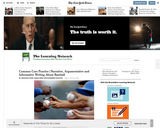
This lesson plan provides a selection of writing prompts for students to choose from, centered around baseball.
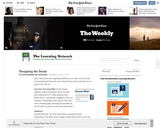
Students research the players and events that have influenced U.S.-China relations since World War II, with specific emphasis on the two countries"™ relationships with Taiwan. They then write a briefing paper, advising the president on the best policy to pursue with China and Taiwan. The article for this activity can be found at http://www.nytimes.com/2003/12/09/world/us-asks-taiwan-to-avoid-a-vote-provoking-china.html?pagewanted=all&src=pm.
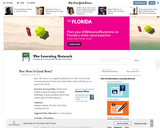
Students examine the impact of digital technology on print journalism and develop creative ideas for delivering news

In this lesson, students examine the impact of digital technology on print journalism and develop creative ideas for delivering news
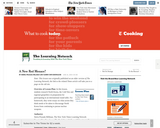
Students research North Korea, the Cold War, and regional geopolitics in preparation for participating in an international round table.
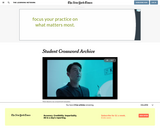
Improve student vocabulary with this large collection of student NYT crossword puzzles with answer keys. Search by topics including Black History Month, The Declaration of Independence, The Great Depression,
The Cold War, The Great Recession, American Labor History, Hispanic Heritage, The Pilgrims and much, much more.
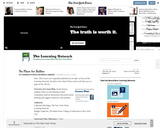
Students reflect on the bullying in their community, hold an anonymous discussion about bullying and suggest solutions to the problem.
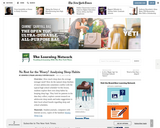
Students explore their own sleep habits by keeping sleep logs. They look for patterns in the data they collect, explore current research on adolescent sleep needs and make suggestions to their local school boards regarding sleep and school schedules.
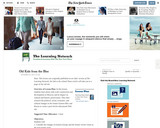
Students learn about wide scale construction and development in Moscow and its impact on cultural and historic preservation. They then research the political, social, economic, and cultural changes in the former Eastern Bloc and Russia to create a post-Soviet educational website.

Students have the chance to discuss issues of foreign policy, political systems, history and economics between North and South Korea since the Cold War. We present a list of key questions, activity ideas and related resources to supplement your instruction.

In this lesson, students reflect on the social relevance of right-brain and left-brain thinking. Then, they practice the science skills of observation and drawing using a right-brain dominant approach and reflect on whether and how the different perspective helped them to learn the material.
Students will:
1. Respond to a logical, systematic and verbal drawing prompt.
2. Learn about the differences between brain hemispheres and the current emphasis on the value of creativity and imagination by reading and discussing the article "Let Computers Compute. It’s the Age of the Right Brain."
3. Employ drawing techniques to engage the right hemisphere of the brain and then apply these techniques to a science topic.
4. Compare two self-created drawings and reflect on the experience of approaching the topic from two perspectives, linear/logical and spatial/nonverbal/holistic.

In this lesson, students will dissect a Times column about the leadership styles of former Vice President (and Nobel Laureate) Al Gore and President George W. Bush and then write their own opinion editorial on presidential leadership.
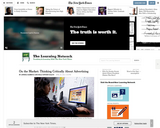
Students consider various forms of advertising, then keep logs of the ads and other branded content they encounter in a specified period, and reflect on their experiences with marketing.

Students use New York Times resources to investigate and chart the current state of key economic indicators like household income and unemployment. By researching and analyzing each indicator and sharing their results, students develop a sense of how we identify economic recoveries.
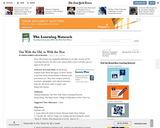
Students learn about the legacy of Boris Yeltsin as the first freely elected leader of Russia in the post-Soviet era. They then compare political, economic, geographic, and cultural structures from the old Soviet order to today's new democratic Russia.

In this resource, students will learn about the Catacombs in Paris. They will hear authentic French spoken in a real life setting.
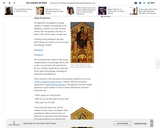
Students have the opportunity to compare works of art from different periods to understand Early Italian Renaissance Art.
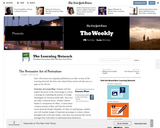
Students explore the power of the visual image to convey a message. They examine the portrait of George Washington on American dollar bills. They next use the featured article, 'Prolific Chinese Painter Is Anonymous No More,' to learn about a famous portrait of Mao, and what the artwork reveals about the People's Republic of China. In small groups, students next examine images of important personages in various cultures throughout the world and, finally, create their own portraits that convey messages they wish others to understand about themselves.

In this lesson from The New York Times Learning Network, students explore the power of the visual image to convey a message. They examine the portrait of George Washington on American dollar bills. They next use the featured article, 'Prolific Chinese Painter Is Anonymous No More,' to learn about a famous portrait of Mao, and what the artwork reveals about the People's Republic of China. In small groups, students next examine images of important personages in various cultures throughout the world and, finally, create their own portraits that convey messages they wish others to understand about themselves.